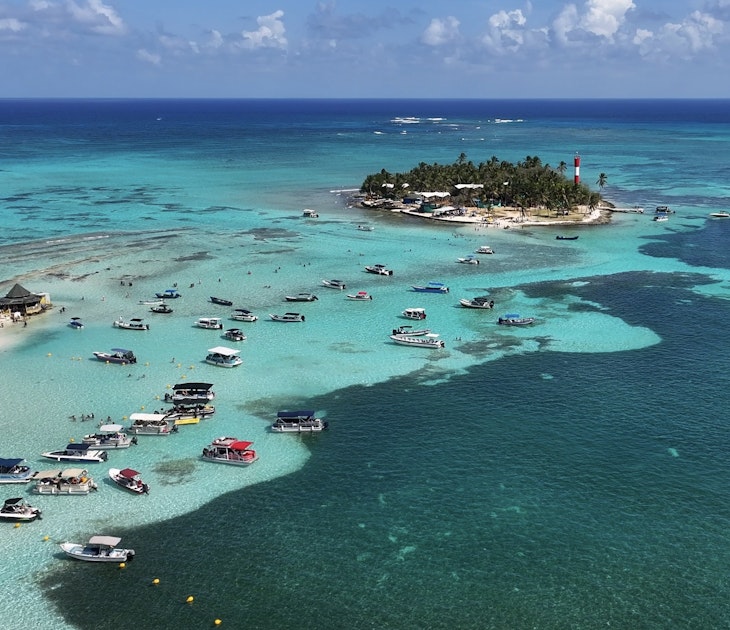

There are plenty of ways to get around Mexico, but taking the bus is usually your best bet © MStudioImages / Getty Images
Mexico is huge! From fluffy, white ski slopes and thick, steamy jungle to cacti-strewn deserts and sublime stretches of untouched sand, expect to use many transport options to get around the world's 13th-biggest country.
Between domestic flights, long-distance buses, hair-raising colectivo, combi minibuses and – for one spectacular stretch – an old-school passenger train, there are plenty of ways to cross this North American behemoth; you just need a little patience. Here's how to get around Mexico.

Cheap and reliable, make the bus your best mate
With a good road network and comfortable, frequent, reasonably priced bus services connecting all cities, buses are your bestie in Mexico. Most cities and towns have one main bus terminal from which all long-distance buses operate. It may be called the Terminal de Autobuses, Central de Autobuses, Central Camionera or La Central (not to be confused with el centro, the city center). Stations in major cities tend to be generally clean, safe and highly functional.
- placement: fullWidth
- path: articles/in-content-top
- possible size: [970, 250], [970, 90], [728, 90], [300, 250], [320, 50], [1, 1],
- targeting:
{ "url": "getting-around-mexico", "destination": "Mexico", "continent": "North-America", "country": "Mexico" }
Generally known as camiones, local buses are usually the cheapest way to get around cities and out to nearby towns and villages. They run frequently, and fares in cities are just a few pesos. In many cities, fleets of small, modern microbuses have replaced the noisy, dirty older vehicles. Buses usually halt only at fixed paradas (bus stops), though in some places, you can hold your hand out to stop one at any street corner.
Bus classes
Deluxe & Executive: De lujo services, primera plus and the even more comfortable ejecutivo (executive) buses run mainly on the busier intercity routes. They are swift and comfortable with reclining seats, plenty of legroom, air-conditioning, movies on (individual) video screens, few or no stops, toilets on board (sometimes separate ones for men and women) and often drinks, snacks and even wi-fi. They use toll roads wherever available.
1st-Class: Primera (1a) clase buses have a comfortable numbered seat for each passenger. All sizable towns are served by 1st-class buses. Standards of comfort are adequate, at the very least. The buses have air-conditioning and a toilet, and they stop infrequently. They show movies on general screens and use toll roads where possible.
2nd-Class: Segunda (2a) clase or económico buses serve small towns and villages and provide cheaper, slower travel on some intercity routes. A few are almost as quick, comfortable and direct as 1st-class buses. Others are old, slow and shabby. Few have toilets. These buses tend to take non-toll roads and will stop anywhere to pick up passengers, so if you board mid-route, you might be standing for part of the trip. In more remote areas, these are often the only buses available.
Bus companies
Mexico has hundreds of bus companies. Many of the major ones belong to the four large groups that dominate bus transportation in different parts of the country.
ETN Turistar Serves major cities along the Pacific coast, central, northern and eastern Mexico and destinations as far south as Oaxaca.
Grupo ADO Connects Mexico City with numerous cities in the Yucatán, Campeche, Quintana Roo, Tabasco, Chiapas, Oaxaca, Puebla, Guerrero and Veracruz.
Grupo Estrella Blanca Runs between Mexico City and the center, north and west of Mexico. Major cities include Guadalajara, Tijuana, Puebla, Monterrey, Puerto Vallarta and Ciudad Juárez.
Primera Plus Destinations served around central Mexico include Mexico City, Guadalajara, Mazatlán, Puerto Vallarta, San Luis Potosí and San Miguel de Allende.
Buying bus tickets
For 1st-class, deluxe and executive buses, buy your ticket at the bus terminal before the trip; in some cities, you can buy tickets from bus offices in central office locations. It is also usually possible to purchase tickets online and be sent an e-ticket or QR code for check-in.
For trips of up to four or five hours on routes with frequent service, you can usually just go to the bus terminal, buy a ticket and head out without much delay. For longer trips, routes with infrequent service or for any trip at busy holiday times, it’s best to buy a ticket a day or more in advance. You can usually select your seat when you buy your ticket. Try to avoid the back of the bus, which is where the toilets are located – it also tends to experience a bumpier ride.
Many 2nd-class services have no ticket office; you just pay your fare to the conductor.
- placement: fullWidth
- path: articles/in-content-middle
- possible size: [970, 250], [970, 90], [728, 90], [300, 250], [320, 50], [1, 1],
- targeting:
{ "url": "getting-around-mexico", "destination": "Mexico", "continent": "North-America", "country": "Mexico" }
Tips for traveling by bus
Buses do occasionally get held up or even robbed. Traveling by day and on deluxe or 1st-class buses, which use toll highways where possible, minimizes this risk.
Buying tickets several days in advance or at less busy times of the day can often get you a discount fare.
Baggage is safe if stowed in the baggage hold – get a receipt for it when you hand it over. Keep your most valuable possessions in the cabin with you.
Air-conditioned buses can get cold, so wear long pants or a skirt and bring a sweater, jacket or maybe a blanket on board. Eye masks and earplugs can be handy if you don’t want to watch videos the entire trip.
Domestic flights can save you both time and money
More than 60 Mexican cities have airports with scheduled passenger services, including Mexico City, Cancún, Guadalajara, Tijuana, Monterrey, Los Cabos and Puerto Vallarta. Flying can be good value on longer journeys, and regional airlines have a decent safety record. Flying may have a higher carbon footprint, but if you have limited time in Mexico, a domestic hop by air is preferable to a 48-hour bus.
Aeroméxico, including its subsidiary Aeroméxico Connect, has the biggest network, but TAR Aerolíneas, Volaris and VivaAerobus also serve many cities, often with lower fares. Other regional airlines are Aéreo Servicios Guerrero, Calafia Airlines, and Magnicharters.

Taxis can be surprisingly cheap
Taxis are common in towns and cities, and they are surprisingly economical. City rides cost around M$20 to M$25 per kilometer. If a taxi has a meter, you can ask the driver if it’s working (‘¿Funciona el taxímetro?’). If the cab doesn’t have a functioning meter, establish the price of the ride before getting in (this may involve a bit of haggling).
Many airports and some big bus terminals have a system of authorized ticket taxis – you buy a fixed-price ticket to your destination from a special taquilla (ticket window) and then hand it to the driver instead of paying cash. This saves haggling time and prevents major rip-offs, but fares are usually higher than you could get on the street.
Uber has become increasingly popular, as well as a similar app-based service Cabify.
Catch a colectivo, combi, minibus or pesero for short city trips
These are all names for vehicles that function as something between a taxi and a bus, running along fixed urban routes usually displayed on the windshield. They’re cheaper than taxis and quicker than buses. They will pick you up or drop you off on any corner along their route – to stop one, go to the curb and wave your hand, then tell the driver where you want to go. Usually, you pay at the end of the trip and the fare (a little higher than a bus fare) depends on how far you go.

Use cars and motorcycles for more flexibility
Having a vehicle in Mexico gives you a lot of flexibility and freedom. With a little adaptation to local road conditions, it’s no more difficult than in most other countries. The highways here are serviceable and fairly fast when traffic is not heavy. There are more than 6,000km of toll highways (autopistas), which are generally good four-lane roads. Tolls cost around M$2.50 per kilometer.
- placement: native
- path: articles/in-content-native
- possible size: [f, l],
- targeting:
{ "url": "getting-around-mexico", "destination": "Mexico", "continent": "North-America", "country": "Mexico" }
You will need a valid driver’s license from your home country and Mexican liability insurance to drive in Mexico. If you’re involved in an accident, you can be jailed and have your vehicle impounded while responsibility is assessed. If you are to blame for an accident causing injury or death, you may be detained until you guarantee restitution to the victims and payment of any fines. Adequate Mexican insurance coverage is the only real protection; it’s regarded as a guarantee that restitution will be paid.
Mexican law recognizes only Mexican motor insurance (seguro), so a US or Canadian policy (even if it provides coverage) is not acceptable to Mexican officialdom. You can buy Mexican motor insurance online through the long-established Sanborn’s and other companies.
Try and avoid driving at night as unlit vehicles, hard-to-see speed bumps, rocks, pedestrians and animals on the roads are common – and drunk drivers are more common. General highway security is better by day. Note that some hijackings, holdups and illegal roadblocks connected with drug gang activities occur, mainly in the north.
Car hire
Auto rental in Mexico can be expensive by US or European standards, but is not difficult to organize. Many major international rental firms have offices throughout the country. Renters must provide a valid driver’s license, passport and major credit card, and they are usually required to be at least 21 years of age (sometimes 25 – those aged 21-24 may have to pay a surcharge).
Rent a taxi and driver
Renting a taxi for a day-long, out-of-town jaunt generally costs something similar to a cheap rental car – around M$600 to M$700.
Motorbikes hire
Motorbikes or scooters can be rented in a few tourist centers. You’re usually required to have a driver’s license and a credit card. However, many renters do not offer any insurance.
Use ferries to get to and from the Baja Peninsula
Vehicle and passenger ferries connect the Baja Peninsula with the Mexican mainland, sailing between Santa Rosalía and Guaymas and from La Paz to Mazatlán and Topolobampo. Not only do these save travelers the effort of going up and round the Gulf of California, but they are often overnight, which saves on a night’s accommodation.
There’s only one train line – but it’s well worth taking
The spectacular Ferrocarril Chihuahua Pacífico runs through the Sierra Madre Occidental between Los Mochis and Chihuahua (the luxury Chepe Express travels only between Los Mochis and Creel). It’s one of the highlights of Mexico travel and the country's only remaining passenger train.
Accessible travel in Mexico
Whilst there is an increase in wheelchair-friendly companies offering trips and tours of Mexico – plus a proliferation of newer resorts and hotels with dropped curbs, ramps, and elevators – there are still a number of significant accessibility obstacles for independent wheelchair users to overcome. In many cities, the pavements are old and uneven, with few or no dropped curbs. Most public transport isn't wheelchair friendly either (think: stairs on the Mexico City Metro and no accessibility provisions on buses). However, some taxi firms and tour companies can arrange private transfers for wheelchair users if booked in advance.
For more details, check out Lonely Planet's Accessible Travel page.
YouTube video player
- placement: fullWidth
- path: articles/bottom
- possible size: [970, 250], [970, 90], [728, 90], [300, 250], [320, 50], [1, 1],
- targeting:
{ "url": "getting-around-mexico", "destination": "Mexico", "continent": "North-America", "country": "Mexico" }
Explore related stories


 Road TripsThe 7 best road trips in Arizona to discover ancient culture and modern wonders
Road TripsThe 7 best road trips in Arizona to discover ancient culture and modern wondersNov 8, 2024 • 6 min read

 Destination PracticalitiesThe 10 dishes you must try in Detroit right now – and where to try them
Destination PracticalitiesThe 10 dishes you must try in Detroit right now – and where to try themNov 1, 2024 • 8 min read
 Solo Travel20 expert solo travel tips for women from the Lonely Planet team
Solo Travel20 expert solo travel tips for women from the Lonely Planet teamOct 31, 2024 • 11 min read





